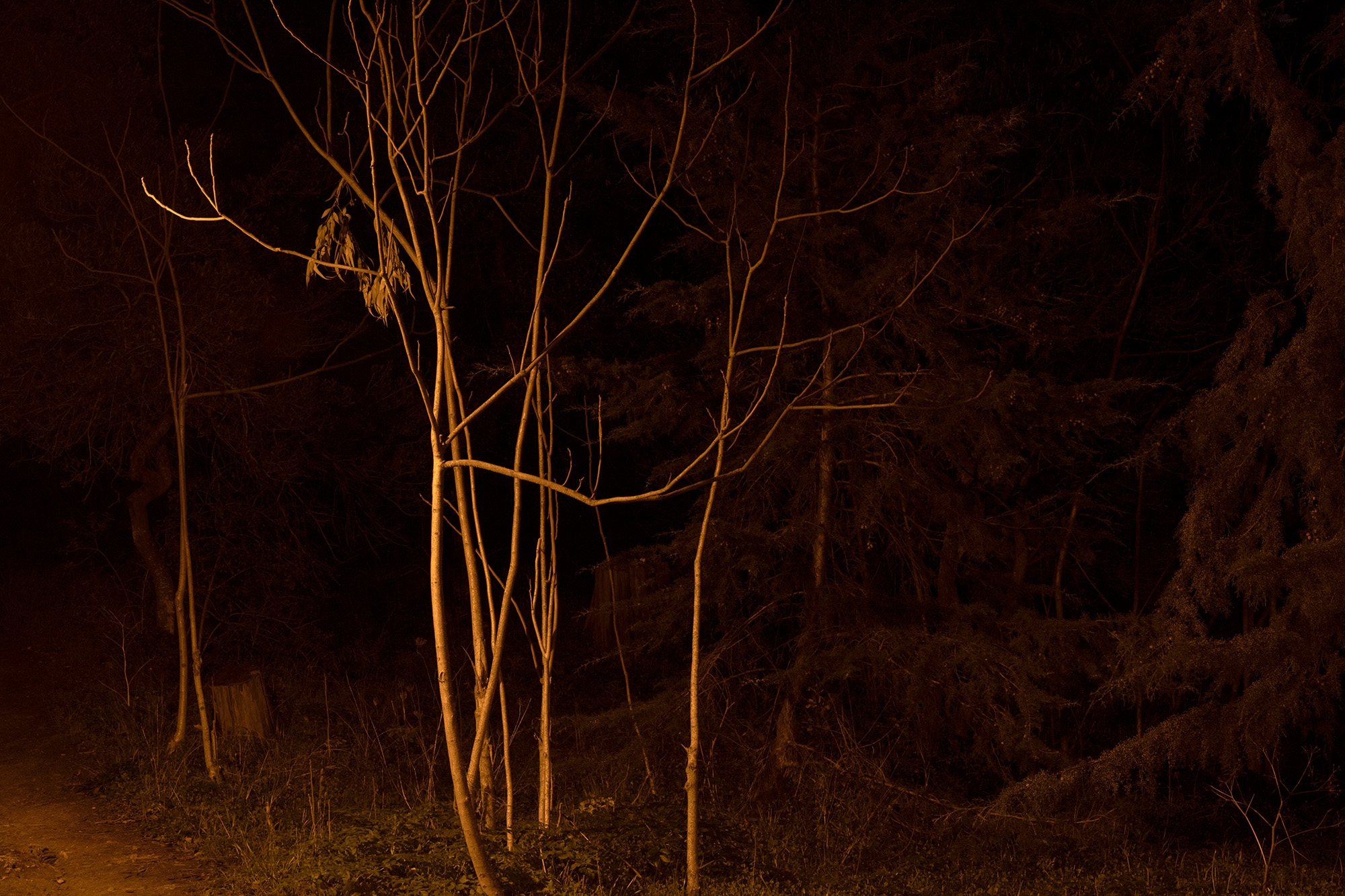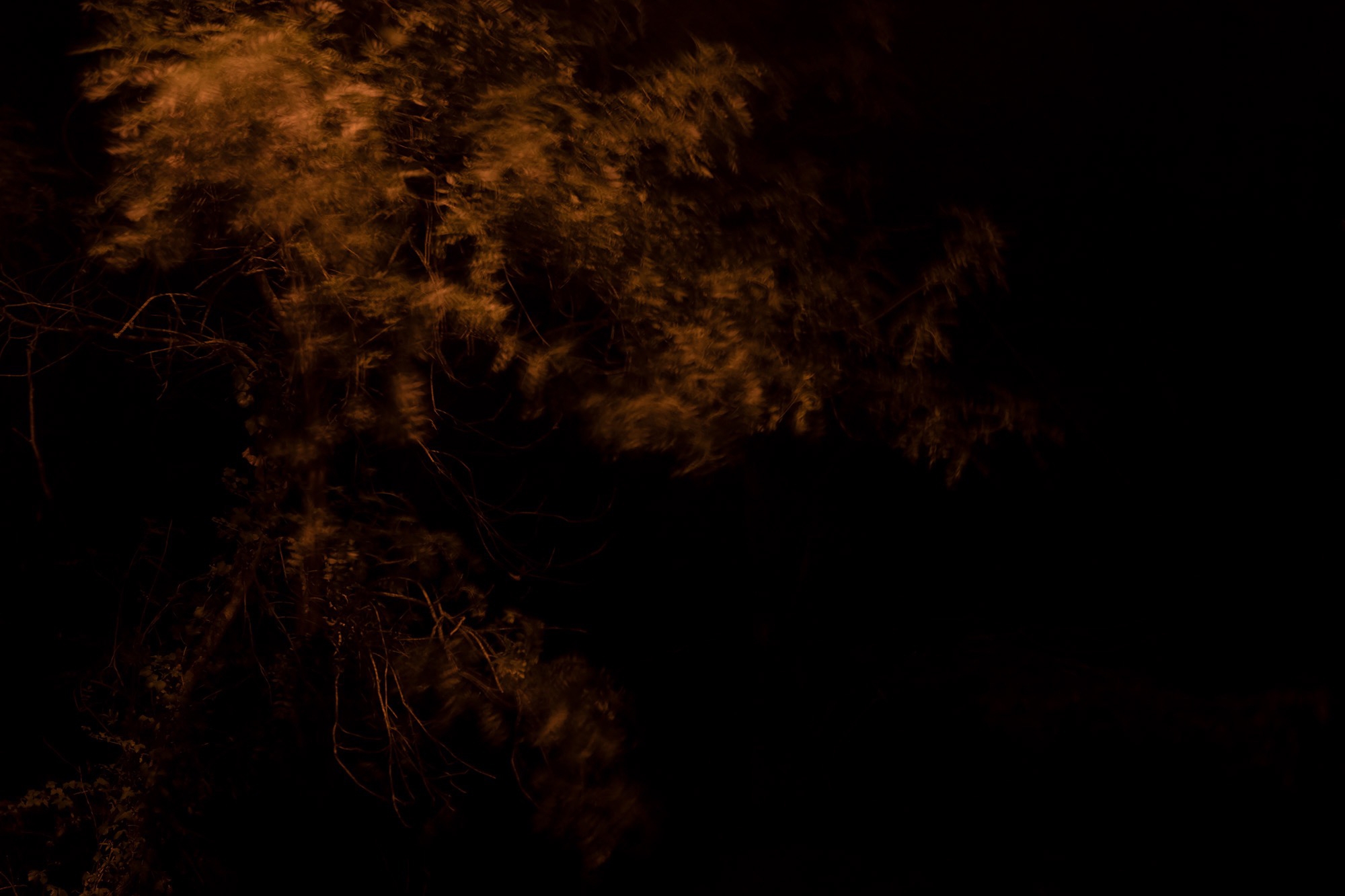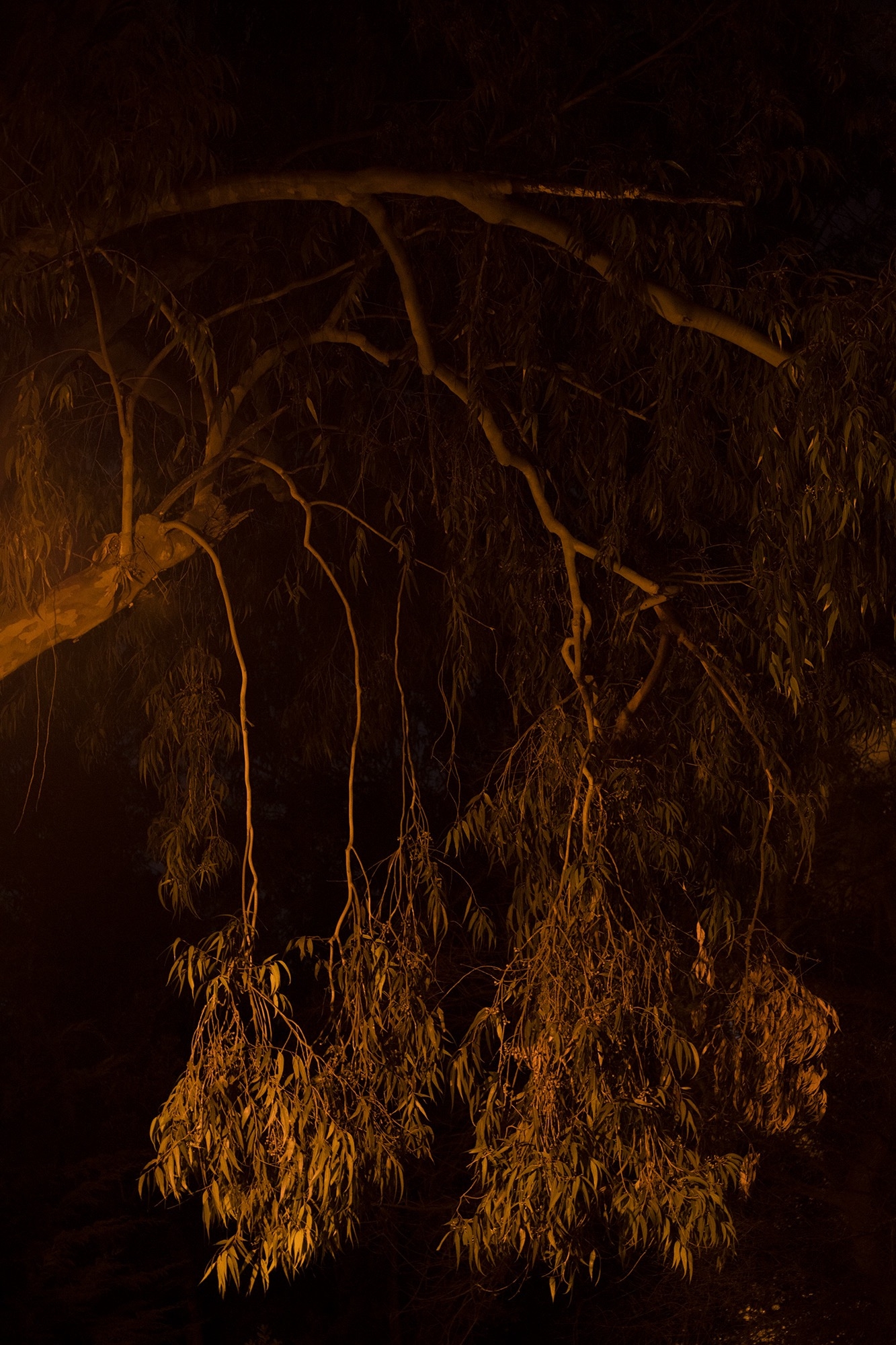Physis
2019
9 Inkjet prints on Hahnemühle Fine Art Baryta paper
93 x 140 cm | 100 x 67 cm | 80 x 53 cm
In this set of photographs that make up the Physis, Carina Martins distances us from the daytime regime determined by modern instrumental reason (ocularcentrism), favouring a digression of the senses beyond the immediately visible and leading us to a certain geography of shadows, night and gloom. Between the urban and civilizational threshold of the Anthropocene and the immense territory of the biosphere, the photographer conducts a visual investigation into the epicentre of nocturnal light environments, praising the shadow of places inhabited by a myriad of mineral organisms, plants and animals.
The desire to approach nature itself is reflected in the act of photographing, seen as a possibility of diving into the fragile complexity of the interdependence of life and, consequently, into the immanence of an aesthetic anchored in the ecological dimension of artistic consciousness. However, if we want to adopt a perspective that is intrinsic to deep ecology, namely, if we want to approach the ‘natura naturans’, a pictorial representation (picture) of nature is of little use. We are thus confronted with a paradoxical aporia or disbelief: how to produce a photograph of the "thing itself" or of "that which cannot be represented"? That is not confined to the mere figuration of an object, and offers the observer the possibility of its confrontation with another being, i.e., from subject to subject.
Text: Rui Ibañez Matoso








